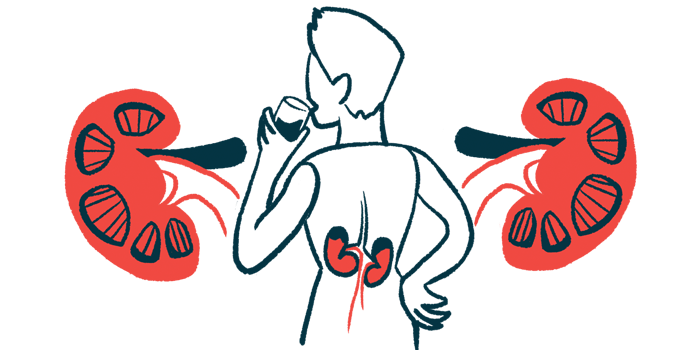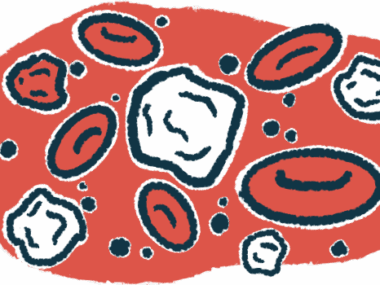Protein may be marker of disease activity, kidney damage in AAV
Scientists ID NGAL as noninvasive biomarker to predict kidney prognosis
Written by |

A protein known as NGAL — fully, neutrophil gelatinase-associated lipocalin — appears to be a marker of disease activity and kidney damage severity in people with ANCA-associated vasculitis (AAV) who have kidney inflammation, according to new research by scientists in China.
The team found that “in active AAV, [blood] NGAL serves as an indicator of disease activity, while urinary NGAL functions as a biomarker for the severity and prognosis of kidney injury.”
These results are key for better management of patients, according to the researchers, who noted the need for “identifying new noninvasive biomarkers” to accurately predict kidney prognosis.
Their work focused on learning more about the significance of NGAL, mainly produced by neutrophils and kidney cells, in the blood and urine of people with AAV. The team noted that, while kidney complications often occur in AAV patients, there’s a lack of noninvasive biomarkers to predict outcomes for these individuals.
Their study, “Significance of urinary and serum neutrophil gelatinase-associated Lipocalin in Antineutrophil cytoplasmic antibody-associated Vasculitis with glomerulonephritis,” was published in the journal International Immunopharmacology.
AAV is a group of autoimmune diseases characterized by inflammation and damage to small blood vessels, typically caused by self-reactive antibodies called ANCAs. These antibodies bind to neutrophils, a type of immune cell, which become overly activated and attack the cells lining blood vessels.
Kidney involvement is common in people with AAV, who may develop glomerulonephritis, or inflammation and damage to the kidney’s filtering units (glomeruli), and kidney failure.
Predicting kidney outcomes in AAV mainly done by invasive biopsy
Currently, the primary method for predicting outcomes of AAV-associated kidney damage is based on kidney biopsy, where a kidney sample is collected and analyzed on a microscope.
“However, the application of kidney biopsy is limited, as not all patients are suitable candidates,” the researchers wrote. Moreover, the procedure is invasive.
NGAL, which is mainly released by activated neutrophils and damaged cells in the kidney’s tiny tubes, has been shown to be elevated in the blood and urine of people with active AAV. But whether NGAL levels are associated with AAV-related kidney damage was unclear.
To learn more, researchers at Tijan Medical University retrospectively analyzed laboratory and clinical data from 134 people newly diagnosed with AAV who had biopsy-confirmed glomerulonephritis. Urine samples were available for all patients and 166 healthy individuals, who served as controls. Blood samples were available for 56 patients and 146 healthy controls.
The results showed that people with AAV had significantly higher NGAL levels than healthy controls, both in the urine (108.3 vs. 22.3 nanograms/mL) and in the blood (268.8 vs. 142.7 nanograms/mL). Overall, more than half of patients had higher than normal urinary NGAL levels, while slightly more than three-quarters had elevated NGAL in the blood.
AAV patients with high blood NGAL levels were significantly older (66.74 vs. 56.23 years) and had significantly greater disease activity, reflected by a higher Birmingham Vasculitis Activity Score (20 vs. 18), compared with those with normal blood NGAL levels.
No significant differences were observed when comparing the elevated and normal urinary NGAL groups.
Additionally, participants with elevated NGAL, either in urine or blood, had higher blood levels of creatinine and lower estimated glomerular filtration rate (eGFR) — both indicators of kidney damage.
High NGAL levels were also linked to significantly higher levels of blood ferritin, a protein essential to produce red blood cells, which may be an indicator of inflammation.
Higher NGAL levels in urine indicate worse kidney function
Further statistical analysis revealed that higher urinary NGAL levels were significantly associated with lower eGFR, indicating worse kidney function. In contrast, no significant associations were detected between blood NGAL levels and laboratory indicators, including urinary NGAL levels.
Moreover, higher urinary NGAL levels were significantly associated with crescentic glomerulonephritis, a type of glomeruli injury often associated with a rapid loss of kidney function. Crescentic glomerulonephritis is characterized by the breakdown of the glomerular structure and the formation of structures called crescents.
Kidney tissue analyses showed that NGAL was mainly present in the kidney tiny tubes, and detected also on neutrophils.
“This suggests that neutrophils in [the] kidney are one potential source of urinary NGAL,” the researchers wrote.
Statistical models showed that urinary NGAL levels could be used to differentiate AAV patients with crescentic glomerulonephritis from those without, with an accuracy of 81%. This predictive performance was superior to that of eGFR (77.5% accuracy) or the presence of excess protein in the urine (64.6% accuracy).
These findings indicate that elevated urinary NGAL is associated with an unfavorable [kidney] prognosis.
Additionally, a higher proportion of patients with elevated urinary NGAL levels progressed to kidney failure than those with normal urinary NGAL levels (26.7% vs. 6.7%), the data showed. In contrast, blood NGAL levels were not associated with kidney prognosis.
“These findings indicate that elevated urinary NGAL is associated with an unfavorable [kidney] prognosis,” the researchers wrote.
Altogether, the results show NGAL as a useful biomarker, the team noted.
“In AAV, [blood] NGAL demonstrates a closer correlation with disease activity, whereas urinary NGAL is indicative of the severity of [kidney] injury,” the researchers wrote. “An elevation in urinary NGAL levels signifies a high degree of crescent formation and correlates with a poor [kidney] prognosis.”







